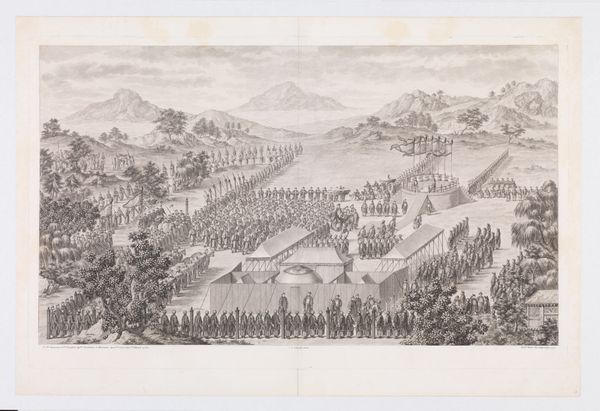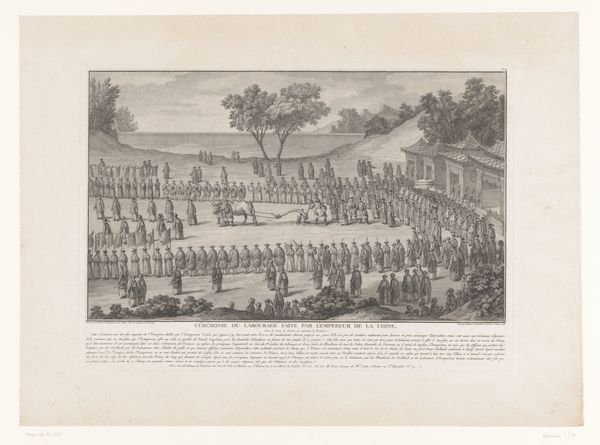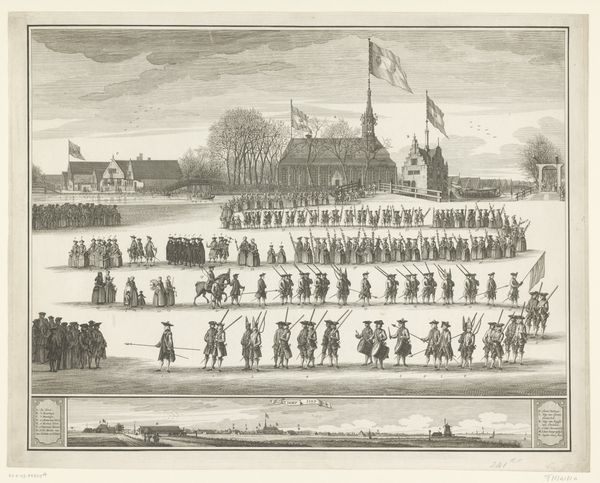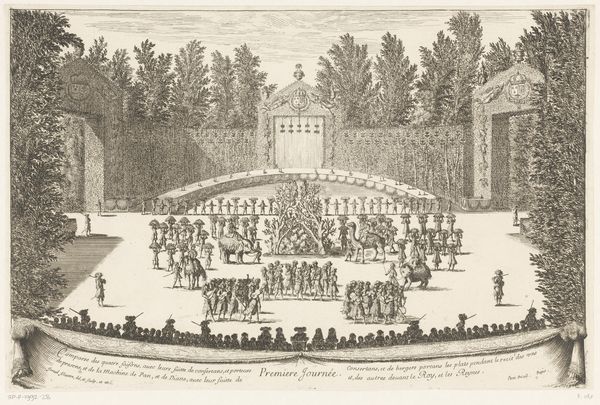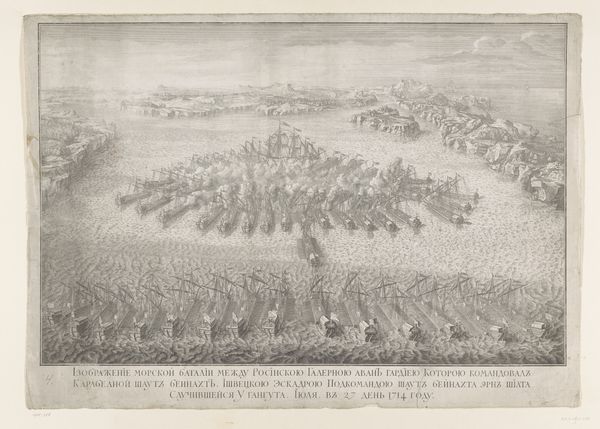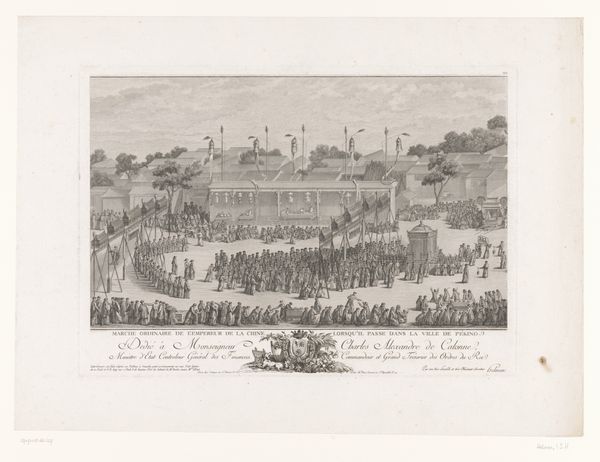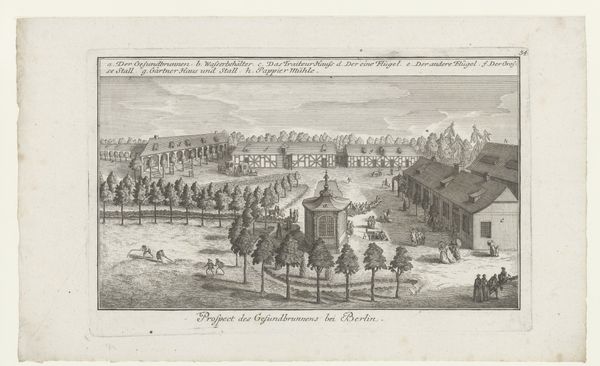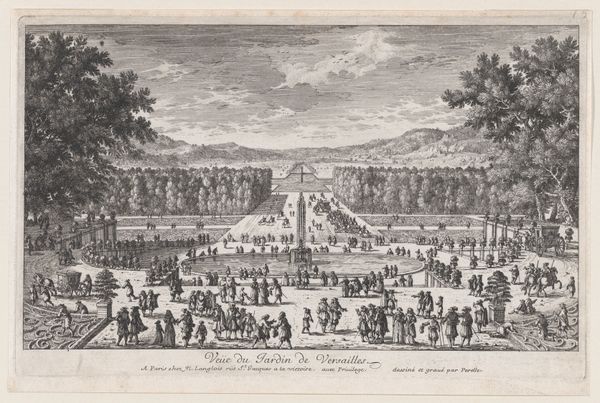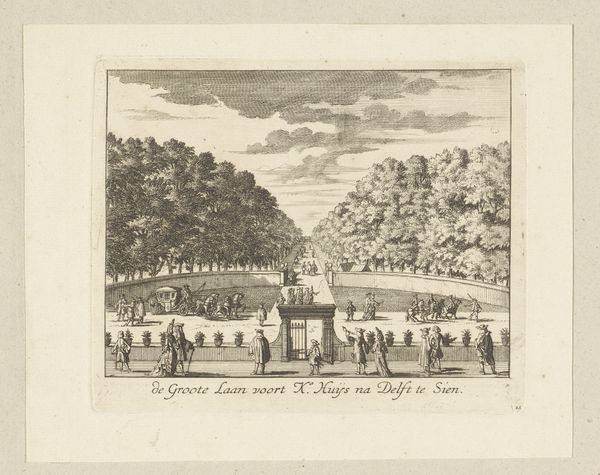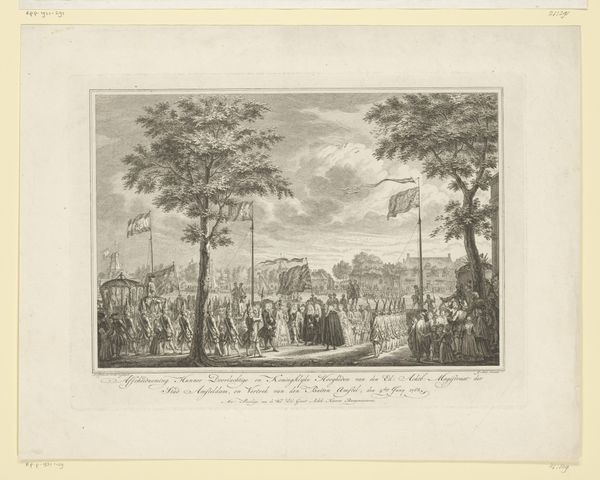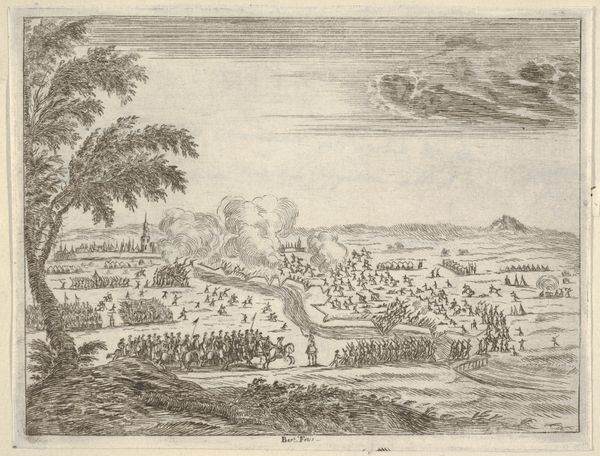
drawing, print, engraving
#
drawing
# print
#
asian-art
#
landscape
#
perspective
#
figuration
#
men
#
line
#
history-painting
#
engraving
Dimensions: Sheet: 25 11/16 × 39 5/8 in. (65.3 × 100.7 cm) Plate: 22 9/16 x 36 11/16 in. (57.3 x 93.2 cm)
Copyright: Public Domain
Editor: So, this is *The Victory Banquet*, a print made by Jacques Philippe Le Bas in 1770. The scale of it is so impressive, with what looks like hundreds of figures in an outdoor celebration, almost a bird's-eye view. How would you interpret all of these figures in this landscape? Curator: I see here not just a depiction of a banquet, but an archive of gestures, each bow and stance a repository of cultural memory. Consider how each individual action is deliberately presented, what collective consciousness is communicated through line and form? Does it seem like this print seeks to immortalize not just the event, but a particular idea of order and hierarchy? Editor: That's interesting. I hadn't really thought about the figures being so carefully placed, but looking at the repetition in their postures, I see that now. What do you make of the perspective? It feels... controlled. Curator: Precisely! The artist’s emphasis on perspective manipulates our gaze. But ask yourself, to what end? Look closer – notice how it guides our eyes, structuring our understanding of power. What emotions does the artist try to create, what memories does this image instill? What part does our Western gaze play? Does it, perhaps, offer us a means to interpret a world fundamentally different from our own, inviting curiosity about what it meant to be “victorious” in this moment? Editor: So, it’s not just documenting a moment, but creating a specific understanding of it for a Western audience. Curator: Yes, an invitation into a dialogue across cultures and across time. Are we looking at genuine ethnographic document, or something subtly filtered for Western consumption, reflecting perhaps European projections onto the "Orient"? Consider what symbols endure, and what new meanings they accrue over time. Editor: I'm definitely going to think more about the artist’s choices when I look at prints like this from now on. Curator: And I will think more about the importance of considering diverse perspectives on such art, thank you.
Comments
No comments
Be the first to comment and join the conversation on the ultimate creative platform.
